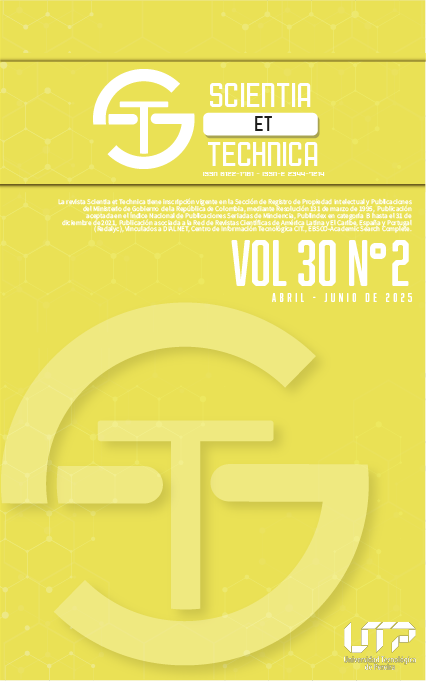Mathematical Model for Analyzing the Fluorescence Emission of Biological Tissue
DOI:
https://doi.org/10.22517/23447214.25544Keywords:
Optical fluorescence spectroscopy, Precancerous tissue, Mathematical modelAbstract
Optical emission fluorescence spectroscopy allows for determining biochemical changes in normal and pathological biological tissue in-vivo or in biopsies. The aim of the study is to analyze the chemical and physical properties of the cervix tissue. The mathematical model is presented to examine and observe the fluorescence emission of the tissue. In the precancerous state development, the optical properties of the tissue can be altered not only by the light dispersion and the fluorescence increase in the epithelium but for the fluorescence reduction in the stroma. Beer-Lambert Law was used to describe light propagation in the tissues. Four components of cervix tissue were identified: collagen, elastin, NADH, and flavins. It was possible to generate support for the medical diagnosis of precancerous lesions on cervix tissue by applying the model with developed algorithms. A good fit of the spectrum was obtained and predictions to the model were properly made, with significative differences for each fluorophore parameter, especially on collagen and NADH.
Downloads
References
K. Duraisamy, “Methods of Detecting Cervical Cancer”, Advances in Biological Research, vol 4, no 4, pp. 226-232, 2011.
J. Cordero Martínez, “Citologías alteradas y algunos factores de riesgo para el cáncer cervicouterino” Revista Cubana de Obstetricia y Ginecología, vol. 41, no. 4, 2015
A. A. Angeleri, “Calidad de la toma exo-cervical en la prevención del cáncer de cuello uterino”, Medicina (Buenos Aires), vol. 77, no. 6, pp. 512-514, 2017
M. F. S. Nava, “Certeza diagnóstica de la colposcopia, citología e histología de las lesiones intraepiteliales del cérvix” Médica Sur, vol. 20, no. 2, pp. 95-99, 2018.
J. E. Samperio Calderón, “Eficacia de las pruebas diagnósticas del Cáncer Cervicouterino y Virus del Papiloma Humano”, JONNPR, VOL. 4, NO. 5, PP. 551-566, 2015. DOI: https://doi.org/10.19230/jonnpr.2953
M. A. Corti, “Aplicación de técnicas ópticas sobre tejidos y fluidos corporales para el diagnóstico no invasivo de enfermedades oncológicas”, Ph. D. Dissertation, Universidad Nacional de la Plata, 2020.
K. Pandey, “Fluorescence Spectroscopy: A New Approach in Cervical Cancer”, The Journal of Obstetrics and Gynecology of India, vol 62, pp. 432-436, 2012. DOI: 10.1007/s13224-012-0298-6
A. Sordillo, “Optical spectral fingerprints of tissue from patients with different breast cancer histologies using a novel fluorescence spectroscopy device”, Technology in cancer research and treatment, vol. 12, no. 5, pp. 455-461, 2013. DOI: 10.7785/tcrt.2012.500330
L. Escuero, “Principio de fluorescencia”, Master’s thesis, Universidad Complutense, Facultad de Farmacia, 2018.
I. Tuñón, “Espectroscopia para el estudio de la materia”, Universidad de Valencia, Tech. Rep., 2014.
D. Skoog. Principios de Análisis Instrumental. ESPAÑA: 5ª. McGraw Hill, 2001.
A. López, “Sistema para mediar la absorbancia (espectrofotómetro)”, Master’s tesis, Tecnológico Nacional de México, Instituto de Tuxla Gutierrez, 2015.
B. Segura. “Espectroscopía óptica de fluorescencia aplicada al soporte de diagnóstico médico de precánceres de tejido de cuello uterino”, Tesis de Doctorado, Universidad Nacional de Colombia, Departamento de Ingeniería Eléctrica, Electrónica y Computación, 2009.
N. Díaz. “Espectrofotometría: Espectros de absorción y cuantificación colorimétrica de biomoléculas”, Campus Universitario de Rabales, Tech. Rep., 2010.
B. Valeur, Molecular fluorescence: principles and applications. John Wiley & Sons, 2012. Doi: 10.1002/9783527650002
K. Vishwanath, “Fluorescence spectroscopy in vivo”. Encyclopedia of Analytical Chemistry: Applications, Theory and Instrumentation, 2011.
A. Mahadevan, “Study of the fluorescence properties of normal and neoplastic human cervical tissue”, Lasers in surgery and medicine, vol. 13, no. 6, pp. 647-655, 1993. DOI: 10.1002/lsm.1900130609
Downloads
-
Vistas(Views): 216
- PDF (Español (España)) Descargas(Downloads): 139
Published
How to Cite
Issue
Section
License
Copyright (c) 2025 Scientia et Technica

This work is licensed under a Creative Commons Attribution-NonCommercial-ShareAlike 4.0 International License.
Copyrights
The journal is free open access. The papers are published under the Creative Commons Attribution / Attribution-NonCommercial-NoDerivatives 4.0 International - CC BY-NC-ND 4.0 license. For this reason, the author or authors of a manuscript accepted for publication will yield all the economic rights to the Universidad Tecnológica of Pereira free of charge, taking into account the following:
In the event that the submitted manuscript is accepted for publication, the authors must grant permission to the journal, in unlimited time, to reproduce, to edit, distribute, exhibit and publish anywhere, either by means printed, electronic, databases, repositories, optical discs, Internet or any other required medium. In all cases, the journal preserves the obligation to respect, the moral rights of the authors, contained in article 30 of Law 23 of 1982 of the Government Colombian.
The transferors using ASSIGNMENT OF PATRIMONIAL RIGHTS letter declare that all the material that is part of the article is entirely free of copyright. Therefore, the authors are responsible for any litigation or related claim to intellectual property rights. They exonerate of all responsibility to the Universidad Tecnológica of Pereira (publishing entity) and the Scientia et Technica journal. Likewise, the authors accept that the work presented will be distributed in free open access, safeguarding copyright under the Creative Commons Attribution / Recognition-NonCommercial-NoDerivatives 4.0 International - https://creativecommons.org/licenses/by-nc-nd/4.0/deed.es license.



